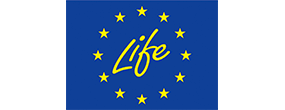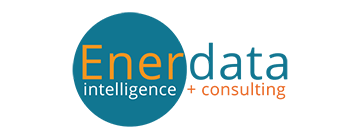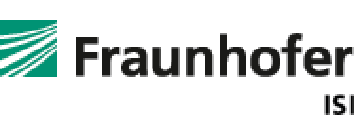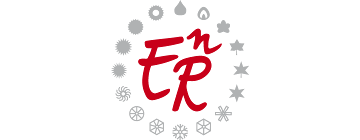Overview
In 2022, Albania's total final energy consumption was 1.95 (Mtoe), reflecting a 2% increase compared to 2010 levels. The distribution of energy consumption among sectors in 2022 was as follows: the residential sector, after applying climatic corrections, accounted for around 27%, while the industrial sector consumed 21%. The transport sector represented the largest share, with 35%, followed by the services sector at 11% and the agricultural sector at 5.8%. When compared to 2010, the relative shares of energy consumption by these sectors have remained relatively stable, with no significant shifts observed. shifts observed.
Figure 1: Final energy consumption by sector (with climatic corrections)
Source: ODYSSEEBoth final energy intensity and primary energy intensity have shown consistent improvement from 2010 to 2022, with substantial reductions in the amount of energy required per unit of economic output. The largest yearly reductions occurred in the periods 2019-2020 and 2021-2022, which might be attributed to external factors such as the pandemic or a disastrous earthquake that hit Albania's Industrial area. The primary and final energy intensities showed a decrease by 11.5% and 9.4% from 2021 to 2022, marking a substantial improvement in energy efficiency in the final consumption sector. The overall trends suggest that Albania has made considerable progress in improving energy efficiency over the past decade, with the most pronounced improvements in recent years.
Figure 2: Primary and final intensities (with climatic corrections)
Source: ODYSSEEThe energy intensity of industry shows some fluctuation but a slight overall decline towards 2022. In the early years (2010–2013), the energy intensity was relatively stable, ranging from 0.155 koe/EUR 2015 in 2010 to 0.122 koe/EUR 2013. However, the period from 2014 to 2018 saw a notable increase, peaking at 0.174 koe/EUR 2018, followed by a decline after 2018, reaching 0.133 koe/EUR 2022. This fluctuation may be influenced by several factors, including changes in industrial output, the implementation of energy efficiency measures (new technologies) and potential inconsistencies or inaccuracies in the data.
The energy intensity in agriculture has been relatively constant, with a slight decline over time. For example, it dropped from 0.055 koe/EUR 2015 in 2010 to 0.053 koe/EUR 2022, reflecting marginal improvements in energy efficiency in the agricultural sector.
The energy intensity of the services sector shows some variability but a general downward trend. The values range from 0.039 koe/EUR 2015 in 2010 to 0.033 koe/EUR in 2022.
Figure 3: Final intensity by sector
Source: ODYSSEEThe total energy supply in 2022 was only 0.04 Mtoe higher than in 2010 (Figure 4), indicating minimal growth over this period. This moderate progression is in line with the increase in final consumption. This trend suggests that renewable energy sources have not yet made a significant impact in Albania's energy mix. The increase in the consumption for other transformations was offset by a reduction on non-energy uses.
Figure 4: Main drivers of the total energy supply variation
Source: ODYSSEELaw No. 28/2021 “On some amendments and additions of Law No.124/2015 on energy efficiency has created the basis for implementation of the obligation schemes and alternative measures for distributors, operators and/or suppliers on the energy markets in the Republic of Albania for achieving savings in final energy consumption.
1. Setting targets for end-use energy savings (this applies to all energy types, including electricity, gas, and solid fuel), which distribution system operators and / or suppliers energy markets are obliged to apply.
2. From a rough calculation based on benchmark the expected savings will be 37 ktoe in 2030.
3. Implementation of the obligation schemes will contribute to reach the targets:
i) on 3% of central government building stock each year to be renovated.
ii) on 2% of public building stock each year to be renovated.
4. Setting targets for end-use energy savings (this applies to all energy types, including electricity, gas, and solid fuel), which distribution system operators and / or suppliers energy markets are obliged to apply.
5. From a rough calculation based on benchmark the expected savings will be 37 ktoe in 2030.
6. Implementation of the obligation schemes will contribute to reach the targets:
iii) on 3% of central government building stock each year to be renovated.
- on 2% of public building stock
Table 1: Sample of cross-cutting measures
| Measures | NECP measures | Description | Expected savings, impact evaluation | More information available |
|---|---|---|---|---|
| Energy efficiency obligation scheme and alternative measures for Albania (EE-O1) | Yes | Law No. 124/2015 of 12.11.2015 "On Energy Efficiency” amended by the Law No. 28/2021 “On some amendments and additions of Law No.124/2015 on energy efficiency”. Obligation under Article 7 of the EE Directive transposed in the Law No.124/2015 as amended |
Buildings
In recent years, energy consumption in Albania's building sector has shown a relatively steady decreasing trend, with recorded figures of 750 kilotons of oil equivalent (ktoe) in 2019, and 737 ktoe in 2022, of which 71% for the residential sector in 2022. This stability reflects the consistent energy demand across residential, commercial, and public buildings. However, the slight variations highlight the influence of factors such as urbanization, seasonal shifts, and economic activities like tourism. Buildings account for 37% of the country’s total energy consumption, a notably high proportion given that many are inadequately heated or cooled. This underscores the inefficiency in energy use and the need for improved buildings performance.
Figure 5: Final energy consumption in buildings (with climatic corrections)
Source: ODYSSEEThe residential sector remains the largest energy consumer within Albania's building sector, driven by high construction rates. Between 2021 and 2023, approximately 7 million square meters of building permits were issued annually, covering both residential and service sectors. However, the majority of these permits (around 5.5 million square meters) are for residential developments, reflecting strong demand driven by urbanization, real estate investments, and higher living standards. As a result, the residential sector is the second-largest energy consumer in Albania, following the transport sector. The service sector has a steadier energy demand, but tourism’s growing importance has increased hotel construction, shaping the sector’s expansion.
Figure 6: Energy and electricity consumption per dwelling (with climatic corrections)
Source: ODYSSEEEnergy consumption in Albania has fluctuated due to political measures and demographic shifts. Before 2013, widespread electricity theft and unpaid bills contributed to significant informality in energy use. In 2013, the government imposed strict penalties, including heavy fines and imprisonment, curbing these practices and causing a spike in reported energy consumption as previously informal use was officially recorded. Between 2014 and 2017, demographic changes played a key role. During this period, a significant number of Albanians, mostly young people, migrated to European countries. While INSTAT data underestimates this trend due to its informal nature, Eurostat reports indicate 160,000–170,000 first-time asylum applications, with broader estimates suggesting 200,000–300,000 emigrants. This large outflow, relative to a population of 2.8 million, contributed to a decline in energy consumption. In later years, some migrants returned after failing to secure asylum, gradually increasing population and energy demand. Energy consumption peaked in 2020–2021 during the COVID-19 pandemic, as quarantine measures confined people to their homes, boosting residential energy use. These shifts illustrate the complex influence of policy, migration, and global events on Albania’s energy consumption.
Figure 7: Energy consumption per dwelling for space heating in households (with climatic corrections)
Source: ODYSSEESpace heating in Albanian dwellings faces significant challenges due to economic, cultural, and infrastructural factors. Most households rely on individual and often inefficient heating systems, such as wood-burning stoves, electric heaters, or gas heaters (LPG). Biomass, primarily wood, remains a common heating source due to its affordability, especially in rural regions. However, this reliance raises concerns about indoor air quality and deforestation. A major issue is the low thermal efficiency of buildings. Many older constructions lack proper insulation, leading to substantial heat loss. Energy-efficient features, such as double-glazed windows and insulated walls, are not widely adopted, particularly in less affluent areas. Heating needs are highly seasonal, with significant increases in demand during harsh winters, especially in mountainous areas, while coastal regions experience milder winters. Urban households generally have better access to electricity and alternative heating options, whereas rural areas rely more heavily on wood and coal, underscoring a notable urban-rural divide. In 2013, the government introduced strict penalties for electricity theft, bringing informal usage into official records. This led to a spike in reported energy consumption for heating in 2014. The large population outflow contributed to a decline in the heating consumption per dwelling by around 25% from 2014 to 2017 (i.e. almost 10%/year). Then the return of some migrants led to a peak in the heating consumption per dwelling at around 0.24 toe/dwelling in 2020–2021. Since 2021, this unit consumption has slightly decreased (-2.2%/year).
Figure 8: Energy consumption per dwelling by end-use in households (except space heating)
Source: ODYSSEESpace heating and cooking are the largest energy use in Albanian dwellings (32% each of total household consumption), followed by water heating (24%), surpassing by far electrical appliances (5%) and air conditioning (8%). Since 2011, the unit consumption per dwelling for water heating has increased by 30%, which is primarily due to the fact that most households rely on individual water heaters. Although the adoption of solar water heaters has increased in recent years, the growth in new construction has kept energy consumption for water heating high and rising. Electricity consumption from appliances and lighting, however, has decreased since 2011. A key factor is the widespread replacement of incandescent bulbs with energy-efficient LED lighting. Additionally, there has been a rise in awareness of energy-efficient appliances. While Albania lacks stringent regulations on appliance efficiency, aside from some secondary legislation on energy labelling that is rarely enforced, the market has self-regulated. Consumers increasingly prefer Class A appliances, driven by cost savings. Air conditioning consumption has grown steadily, reflecting an improvement in living standards and comfort in homes. As more households invest in cooling systems, their contribution to overall energy use has increased.
Table 2: Sample of policies and measures implemented in the building sector
| Measures | NECP measures | Description | Expected savings, impact evaluation | More information available |
|---|---|---|---|---|
| Minimum energy performance requirements for buildings, building units and building elements (Decision no. 537, dated 8.7.2020) | Yes | The Decision of the Council of Ministers no. 537, dated 8th July 2020 (Vendimi për miratimin e kërkesave minimale të performancës së energjisë së ndërtesave dhe të elementeve të ndërtesave) establishes a comprehensive framework of minimum energy performance standards and procedures aimed at improving energy efficiency across various types of buildings and construction scenarios. This decision addresses: a) Establishing and Enforcing Energy Performance Requirements for New Buildings: It mandates the minimum energy performance requirements for all newly constructed buildings and individual building units, applying to every phase of the project, including initial design, ensuring that new structures meet specified energy efficiency standards from the outset. b) Enforcing Energy Standards in Existing Buildings During Major Renovations: This provision sets energy performance requirements for existing buildings and building units undergoing significant renovations, reconstructions, expansions, or additions. These standards apply throughout all design and construction phases of renovation projects, ensuring that improvements to existing structures also adhere to energy efficiency targets. c) Setting Standards for Specific Building Elements Affecting Energy Performance: The decision extends to individual building components within the building envelope (e.g., walls, roofs, windows) that significantly impact the overall energy performance of the structure. When these components are replaced or newly added, they must comply with the established minimum energy performance standards to enhance the building's overall energy efficiency. This comprehensive decision supports the national goal of reducing energy consumption, promoting sustainable building practices, and contributing to a greener environment by ensuring that both new and renovated buildings adhere to high energy performance standards. | ||
| Energy Performance Certificate | No | In 2020, Albania approved the Decision on the approval of the certification procedures and conditions of energy performance of buildings, the model, the contents, and the registration conditions of the "Energy Performance Certificate", to enhance energy efficiency in buildings, which was implemented in 2021 after secondary legislation for energy auditing was established. This legislation defined procedures for energy audits, building energy certification, and the creation of a registry for Energy Performance Certificates (EPCs). The system aims to promote energy efficiency, track building performance, and align Albania with EU energy standards and climate commitments. It supports sustainable building practices, encourages energy-efficient renovations, and reduces energy costs, contributing to the country’s environmental and economic goals. This measure is linked directly with the measure Minimum energy performance requirements for buildings, building units and building elements and the savings are the same for both of them. |
Transport
The transport sector is dominated by road transport, covering almost 98% of total consumption in 2010 and 95% in 2022. The consumption of water transport has increased by 267% during this period, but it still accounts for only 5% of consumption in 2022. We observe that the consumption of domestic air transport and rail transport is recorded as zero. This is consistent with the current situation in Albania, where domestic air transport is minimally utilized, and the railway system is not in operation. However, with ongoing investments, it is expected that the railway sector will see future development and increased utilization in the coming years.
Figure 9: Transport energy consumption by mode
Source: ODYSSEEThe transport sector is dominated by road transport, covering almost 98% of total consumption in 2010 and 95% in 2022. The consumption of water transport has increased by 267% during this period, but it still accounts for only 5% of consumption in 2022. We observe that the final consumption of domestic air transport and rail transport is recorded as zero. This is consistent with the current situation in Albania, where domestic air transport is minimally utilized, and the railway system is not in operation. However, with ongoing investments, it is expected that the railway sector will see future development and increased utilization in the coming years.
Table 3: Sample of policies and measures implemented in the transport sector
| Measures | NECP measures | Description | Expected savings, impact evaluation | More information available |
|---|---|---|---|---|
| Support mechanisms for EE and clean vehicles (EE-T3) | Yes | Imported vehicles are subject to the customs rate of 0%. However, the imported vehicle owners are obliged to pay VAT of 20%, while the supply of new vehicles with zero-km electric engine, not previously registered in any other country, is entirely exempted from VAT. Excise is reimbursed for biofuels used in the transport by the customs authority, up to 5%. | 22 ktoe | |
| Energy labelling of new cars (EE-T1) | Yes | Setting a regulatory framework ensuring transparent information relating to the fuel economy (efficiency) and CO2 emissions of new passenger cars offered for sale or lease. |
Industry
In 2022, final energy consumption in the industrial sector reached 0.42 Mtoe, marking a 17% increase compared to 2010. A significant portion of this consumption—nearly half—was concentrated in the non-metallic minerals sector, with the cement industry playing a major role in driving energy demand.
Figure 10: Final energy consumption of industry by branch
Source: ODYSSEEEnergy audits for industrial operators assess energy consumption, losses, and efficiency potential, issue energy certificates, and ensure compliance with energy savings targets. Focused on large energy consumers and SMEs, these audits aim to implement energy efficiency (EE) measures. By adopting these measures, industries can achieve at least a 4% energy savings target, contributing to overall energy efficiency improvements and fulfilling regulatory obligations for energy management.
Table 4: Sample of policies and measures implemented in the industry sector
| Measures | NECP measures | Description | Expected savings, impact evaluation | More information available |
|---|---|---|---|---|
| Energy audits for large energy consumers with focus on industrial activities (EE-E1). | Yes | Implementation of energy audits for industry operators to evaluate the energy consumption, losses, EE potentials, issue the energy certificates and the obligation of the industries to undertake EE measures and to fulfil energy savings targets. In accordance with the principle on “Energy audits for large energy consumers with focus on industrial activities” and the principle on “Energy management systems for SMEs”: Through the implementation of these measures, it will be possible to guarantee the achievement of energy savings at the level of at least 4% of the total equivalent energy consumed by this category of consumers. Law No. 124/2015 of 12.11.2015 “on Energy Efficiency”, amended; DCM No. 407, of 19.6.2019 “On the approval of procedure, categories, conditions, qualifications and professional experience requirements for the person who will be the holder of the energy auditor certificate” Order of Minister of Infrastructure and Energy No 203 of 18.10.2022 “On the approval of the format of the action plans of large energy consumers and the annual progress report” | 4 % |





